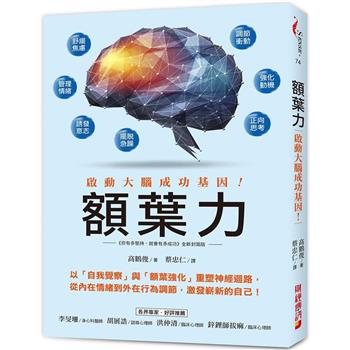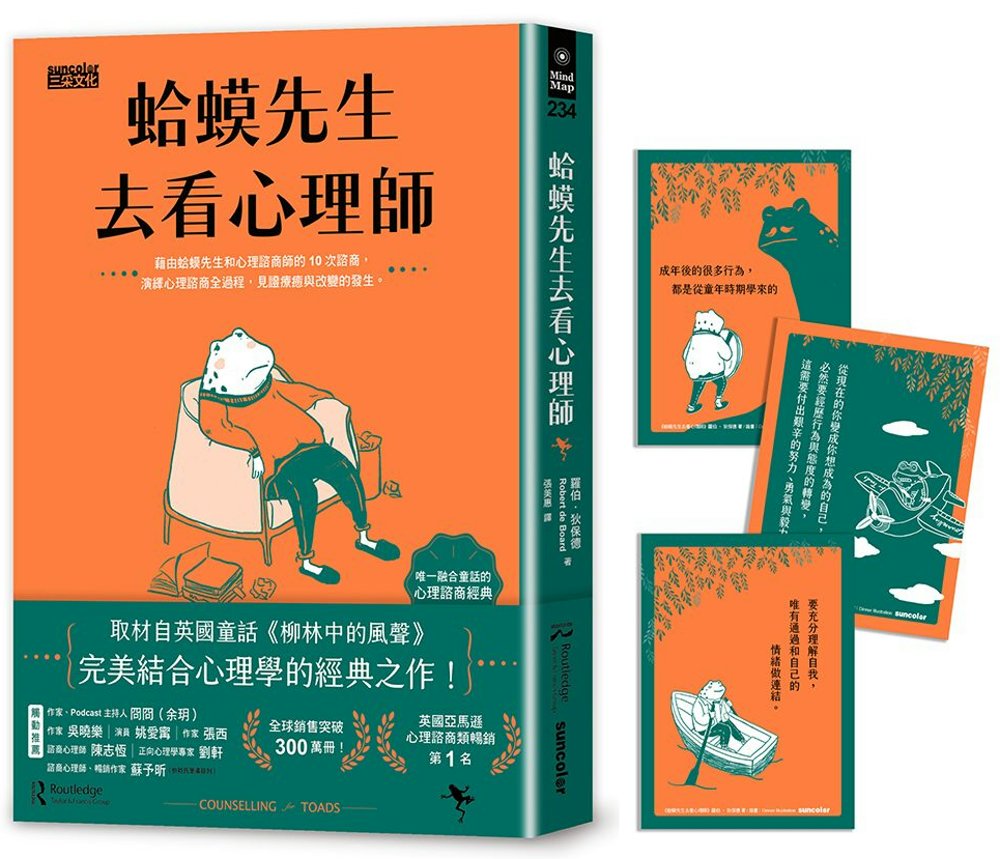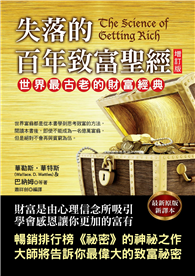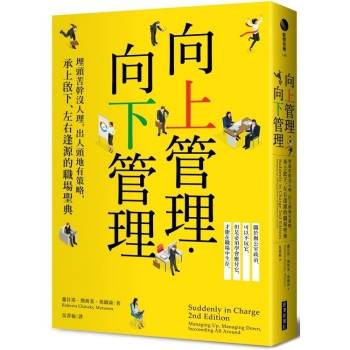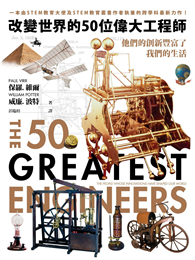| FindBook |
|
有 1 項符合
台灣社會研究季刊第九十六期的圖書 |
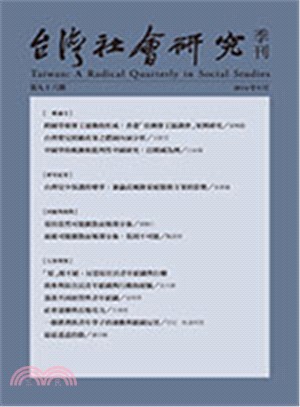 |
$ 225 | 台灣社會研究季刊:第九十六期
出版社:台社 出版日期:2014-09-01 規格:21*15*1.5cm / 初版  看圖書介紹 看圖書介紹
|
|
|
 臺灣是位於東亞、太平洋西北側的島嶼,地處琉球群島與菲律賓群島之間,西隔臺灣海峽與中國大陸相望,周圍海域從3點鐘方向以順時鐘排序分別為太平洋、巴士海峽、南海、臺灣海峽、東海所環繞,為東亞島弧中一島。面積約3.6萬平方公里,為世界第38大島嶼,其中七成為山地與丘陵,平原則主要集中於西部沿海,地形海拔變化大。因北回歸線貫穿,氣候介於熱帶與亞熱帶地帶之間,北回歸線以北為副熱帶季風氣候、以南為熱帶季風氣候,自然景觀與生態系資源相當豐富而多元。人口約2千3百萬人,超過七成集中於西部的五大都會區,其中以行政中心臺北為核心的臺北都會區最大,總人口達700萬。族群構成以漢族、原住民族為兩大民族:原住民族由多個屬於南島民族的部族組成,漢族則依民系及移民年代的不同而分為閩南、客家與外省族群,其中閩南為臺灣最大族群。
臺灣是位於東亞、太平洋西北側的島嶼,地處琉球群島與菲律賓群島之間,西隔臺灣海峽與中國大陸相望,周圍海域從3點鐘方向以順時鐘排序分別為太平洋、巴士海峽、南海、臺灣海峽、東海所環繞,為東亞島弧中一島。面積約3.6萬平方公里,為世界第38大島嶼,其中七成為山地與丘陵,平原則主要集中於西部沿海,地形海拔變化大。因北回歸線貫穿,氣候介於熱帶與亞熱帶地帶之間,北回歸線以北為副熱帶季風氣候、以南為熱帶季風氣候,自然景觀與生態系資源相當豐富而多元。人口約2千3百萬人,超過七成集中於西部的五大都會區,其中以行政中心臺北為核心的臺北都會區最大,總人口達700萬。族群構成以漢族、原住民族為兩大民族:原住民族由多個屬於南島民族的部族組成,漢族則依民系及移民年代的不同而分為閩南、客家與外省族群,其中閩南為臺灣最大族群。 臺灣自古為原住民族世居之地,原住民族在17世紀中葉以前一直居於主體民族地位;隨著漢族不斷從中國本土移入與墾殖、以及與平埔族原住民通婚,漢族遂取代原住民族成為臺灣的最大民族。自有信史記錄以來,臺灣歷史上曾經歷大肚王國、荷西時期、明鄭時期、清治時期、日治時期等多次政權遞嬗,最近一次為1945年10月後由中華民國統治。1949年兩岸分治後,中華民國的有效統治範圍限縮至臺澎金馬與部分南海島礁,臺灣自此實質上成為中華民國的主要領土,並延續至今。
歷經1860年臺灣開港以來至日治時期所打下的現代化基礎,以及中華民國政府遷臺後運用美援所進行的一系列的經濟建設,加上國際上冷戰對峙的格局,使臺灣自1960年代起在經濟與社會發展上突飛猛進,締造舉世聞名的「臺灣奇蹟」,名列亞洲四小龍之一;之後在1990年代躋身已開發國家之列,目前無論人均所得或人類發展指數均具世界先進國家水準。臺灣擁有蓬勃的製造業及尖端科技,在半導體、資訊科技、通訊、電子精密製造等領域執牛耳。貿易方面主要透過高科技產業賺取外匯,經濟發展上以高科技產業與服務業為中心,亦朝向文化產業及觀光業發展。隨著1987年戒嚴時代結束以來政治上的自由化與民主化,以國民兩黨為首的政黨政治、統獨議題、以及公民社會的形成,臺灣逐漸淡化過往戒嚴時代形塑的中國史觀,發展出臺灣主體意識與多元文化主義,使得臺灣文化呈現多元並立的面貌。
![]() 維基百科
維基百科
- 圖書簡介
【一般論文】
跨國草根移工運動的形成:香港「亞洲移工協調會」案例研究/夏曉鵑(95 民103.9 頁1-47)
近幾年來,資本主義全球化快速擴張,國際移工的相關學術研究也顯得日形重要。這些研究除了呈現出全球化如何增強勞工遷徙的程度之外,也描述了移工們的生活是如何受到全球化的劇烈影響。然而,少有研究紀錄移工如何彼此結合對抗資本主義全球化。藉由不同國家草根移工組織的連結,移工已經創造出一種由下而上的跨國主義,積極地挑戰資本主義全球化。本文鎖定香港的「亞洲移工協調會」(Asian Migrants’ Coordinating Body,AMCB),分析草根移工組織如何跨越國族的疆界,共同對抗資本主義全球化。大部分將香港視為「跨國行動主義據點」(site of transnational activism)的研究都忽略了草根移工組織的重要性,以及他們與其他移工NGO組織的區隔。「亞洲移工協調會」之所以特別有趣而重要,因為它不僅是第一個來自亞洲不同國家移工的結盟,更是不同亞洲國家的「草根」移工組織的結盟。藉由研究「亞洲移工協調會」,本文分析來自包括菲律賓、印尼、泰國、尼泊爾與斯里蘭卡等不同亞洲國家的移工是如何跨越國族、種族和性別的藩籬而一起工作。也將探討「亞洲移工協調會」如何形成?已達成哪些重要成果?是由哪些因素促成?與其它NGO的關係為何?對於草根跨國主義的推展又具有什麼樣的啟示?
關鍵詞: 跨國主義、移工運動、草根組織、草工移工運動、亞洲移工協調會
As capitalist globalization has intensified in recent years, academic studies of international labor migration have gained significance. Studies have shown how globalization has increased the extent of labor migration and how the lives of migrant workers have been greatly affected by globalization. However, few studies have documented how migrant workers collectively resist capitalist globalization. By collaborating with migrants from different countries, migrant workers have created transnationalism from below, vehemently challenging capitalist globalization. This article focuses on the development of the Asia Migrants Coordinating Body (AMCB) in Hong Kong to illustrate how grassroots migrant organizations resist capitalist globalization. Most studies of Hong Kong as a “site of transnational activism” overlook the unique importance of grassroots migrant organizations and their distinctions from migrant NGOs. The AMCB is particularly interesting and important not only because it is the first coalition of migrants from different Asian countries but also because it is a coalition of grassroots migrant organizations from different nationalities. By focusing on the Asian Migrants Coordinating Body, this article analyzes how migrant workers from different Asian countries, including the Philippines, Indonesia, Thailand, Nepal and Sri Lanka, have worked together across nation-state, racial, and gender boundaries. This article asks how AMCB originated; what AMCB has achieved; what makes AMCB possible; and what are the lessons of grassroots transnationalism demonstrated by AMCB and its relationship with NGOS.
Keywords: transnationalism, migrant movement, grassroots organizations, grassroots migrant movement, Asian Migrants Coordinating Body
門裡門外誰照顧、平價普及路迢迢?台灣嬰兒照顧政策之體制內涵分析/王舒芸(95 民103.9 頁49-93)
福利國家在發展的黃金時期,主要透過所得移轉與再分配的策略,達到去商品化與去階層化的目標。但在過去兩個世紀裡,各國經歷重要的社會與人口變遷,無疑帶來新的挑戰,其中低生育率不僅深化高扶養比的社會風險,也對勞動市場產生質變。父母親的「養家者」角色及「照顧者」角色,成為重要分析與介入面向。據此,在討論「兒童照顧責任去家庭化」時,必須清楚區分「兒童照顧責任」並非單一面向,金錢(兒童津貼制度)、時間(親職假)、及服務(托育體系),構成三大軸心內涵。但各國對不同政策之偏好與組合,呈現了「去」家庭化與「再」家庭化兩種截然不同的影響方向。因此各國採取了不同比重的政策組合,於焉其適用對象、所得替代水準、給付期限、財務可負擔性、服務品質與可近性,均有相當的差異存在。
台灣嬰兒照顧政策歷經幾番轉折,在2001年前幾乎被視為家庭責任,殘補是主要精神,因此補助對象均為中低收入戶,是典型「隱含的家庭主義」;直到2001年保母系統成立、2002年育嬰假立法通過,政府才開始分擔一般家庭的照顧責任,且去/再家庭化的路徑在此階段同時萌芽,但因缺乏財務補貼,因此受益人口有限;直到2008 年至2011 年,保母托育費用補助及育嬰留職津貼上路,正式邁向「選擇性家庭主義」,兩者均強調工作福利的特色,家長可在勞動參與及家庭照顧間較自由的移動。但這特色在2012年因未就業家長育兒津貼、及去管制化的保母補助新制,轉向為「明顯的家庭主義」。整體而言台灣0-未滿兩歲的照顧制度在2012年塵埃落定,在受益對象上看似從殘補擴張到每種照顧都有國家政策支持,在體制建構上踏出重要的一步,且給付金額也在各方案中力求等值均一,看似重視公平與支持家庭選擇。但本文指出,因制度設計及文化價值的限制,使得普及平價的公共性目標看來路迢迢:在制度層次,雖去/再家庭化的策略並存,但過於倚賴提倡消費者自主的津貼,給付水準又低,無法保障實際照顧者的經濟自主,缺乏去商品化的效果;家外照顧的收費仍奉行自由市場邏輯,未實施定價機制,削弱去家庭化的誘因強度。再者,文化層次上,受限於競爭論述、對政府提供的服務不夠信任、未處理密集母職的迷思、與家戶內性別分工不均等文化與價值議題,也阻礙了制度分擔家庭照顧責任的程度。
關鍵詞: 兒童照顧、去家庭化、育嬰假、育兒津貼、托育政策
East Asian countries present as exemplary cases of male breadwinner welfare model in the sense that childcare is always considered as family responsibility. However, an increase in female labor force participation as well as dramatic declining fertility rate simultaneous occurred during the past decades, thus posed challenges in most East Asian countries in general, and specifically for Taiwan, as the fertility rate is one of the lowest in the world recently. As a result, childcare policies have been undergone transformation and reconfiguration. Accordingly, whether these newly policy developments represent the ideal and institutional break with the male breadwinner model becomes the heated debate. This paper aims to identify what are the major features of childcare expansion? What are the policy discourses and debates regarding the ideal role of state in terms of governing, funding, and provision? And what kinds of strategies government actually or intends to implement in order to creating a conducive environment for childbearing? The preliminary results shows that, though with more financial investment and regulation from government, the structure of care provision, and caring ideology still remains unchanged. However, the core feature of infant care is strong re-familiailsm and limited liberal de-familialism. In terms of the changing role of government, though increasing intervention and investment in childcare, major strategy is subsidy-oriented, in the discourse of market mechanism and parental choice.
Keywords: child care, de-familialization, parental leave, child care subsidies, child care policy
中國學的軌跡和批判性中國研究:以韓國為例/白永瑞(95 民103.9 頁95-136)
本文試圖展望以「作為運動的中國學」為動力而貫通學術制度內外的批判性中國研究的(不)可能性。批判性中國研究應該具備以下幾個條件:第一,具有分科橫斷性指向;第二,要超越將古典中國與現實中國進行分離的二分法;第三,在與當代的中國現實和主流思維體系保持批判性距離的同時,還將它當作重構我們對現實生活社會認識的契機;最後,要解構中國中心主義。為了找到具備以上條件的中國學的可能性,本文主要考察了人文學領域中的韓國中國學的譜系。結果發現「作為制度的中國學」和「作為運動的中國學」經過相互競爭、相互滲透的動態性過程,積累了我們對中國的認識,而且作為其一部分,批判性中國研究應對著時代的變化,斷斷續續地延續著。朝鮮王朝的學者們在生產現實中國相關知識的同時,重新解釋中國古典並重構既有價值觀和世界觀;日本殖民時期,學者們在用科學方法將古典中國進行系統化的同時,並著眼於現代中國的文學運動, 重新發現中國且將之視為借鏡自主解析朝鮮;冷戰時期的學者們也在制度內外辛苦積累了探索中國的經驗。進行批判性中國研究就是讓這些人文學遺產、成果和經驗得以新貌重新復活。最後,本文在展望批判性中國研究的方向時,提出了它該具備的條件及作為其基礎的認識框架的兩個方向(雙重性周邊的視角和全球本土學)。
關鍵詞: 北學,支那學,漢學,中國學,作為運動、制度的學問,全球本土學
This paper aims to explore the (im)possibility of conducting critical Chinese studies and research which fully encompass the requirements inside and outside an academic institution when driven by the concept of “Chinese studies as a movement”.
Critical Chinese studies need to fulfill the following requirements:(1) be transdisciplinary; (2) overcome the dividing dichotomy of the subject into classical China and modern China; (3) keep some critical distance from the mainstream way of thinking and the reality of modern China while reconstructing the perception of the society we live in; and (4) deconstruct the Sinocentrism. To find if such studies are viable, the history of Chinese studies in Korea was examined with a focus on the humanities. As a result, we examined the accumulation of our knowledge of China during the dynamic process in which “Chinese studies as an institution” and “Chinese studies as a movement” competed with and affected each other. As part of this, it was also discovered that the critical Chinese studies was sustained, albeit intermittently, in response to the changes of time. There are three main points to consider. The heritage left behind by the scholars of Joseon who produced the knowledge on contemporary China and re-interpreted classical China to reconstruct the existing values and viewpoints of the world; the experience of systematically organizing classical China using a scientific approach under the rule of colonial Japan while, inspired by the literary movement of contemporary China, rediscovering China and using that perspective as a mirror to look at Korea; and the experience that our forerunners toiled to gain inside and outside the institution in the Cold War era-all of these come together to make up today’s critical Chinese studies. Lastly, the paper looked at the future direction that critical Chinese studies should take and proposed two directions (a dual peripheral perspective and “Glocalogy”) that should form the basis of the epistemic framework of our critical Chinese studies.Keywords: Bukhak, Sinagaku, Sinology, Chinese studies as an institution/a movement “Glocalogy”
【研究紀要】
台灣兒少保護的變革︰兼論高風險家庭服務方案的影響/余漢儀(95 民103.9 頁137-173)理解在2004年年底開始的連串創新家庭服務方案(例如高風險家庭關懷服務、弱勢家庭兒少緊急生活扶助、及兒少保人力補充等)的執行動態,對台灣兒少保護運動的走向具有政策及實務意涵。研究提問有三:(1)初期是那些非營利組織受委託執行「高風險家庭處遇」?機構數量又有何變化?它們與政府互動的經驗如何?(2)中央、縣市政府、及受委託民間機構三方對方案目標解讀有否不同?又是透過怎樣的機制建立服務共識?(3)高風險家庭服務與其他方案互動,如何影響既有的兒少保護體系?透過各縣市政府及民間單位承辦人員的問卷寫、及六場焦點座談的資料分析,發現高風險家庭方案除了讓台灣三大兒福機構在服務版圖有所變化外,也門戶大開寧爛毋缺,打破實務界「沒有三兩下不敢做兒保」的傳統。中央利多但核銷不易,有縣市政府自編預算支付民間單位必要成本,合約單位雖可新聘社工人力開拓服務,但較具專業規模之機構為維護品質,得自行吸納進用資深人員及加聘督導的額外成本。高風險方案究屬兒少保預防或後送服務? 公私部門各自表述,部分縣市政府為出清兒少保舊案將之混為一談, 以致高風險方案與「家庭維繫」、「追蹤輔導」服務界線模糊成為替代。分區巡迴督導不失為架構服務共識的機制,也有利於中央取回界定方案的主導權,而縣市的聯繫會報平台或有利於各民間委託機構的同儕督導。很難預測它對兒少保護次級預防體系的發展是否有利。做為中央主管機構,最後既能重掌方案界定權、又能讓縣市政府額外自編預算配合、也結合民間資源,所以兒童局應為此番兒少保服務變革風潮的最大贏家。
關鍵詞: 次級預防、委託非營利機構、兒童保護、高風險家庭方案
To understand the implementation dynamics of some innovative projects since 2004-Project for Families at High-Risk, the Emergency Relief Project, and the Child Protection Manpower Enhancement, has practice as well as policy implications for child protection in Taiwan. Three research questions have been raised: (1) What kind of NPOs would get contracts to carry out the High-risk Family project? What were their experiences and numbers of growth? (2)Have the Child Welfare Bureau, county governments, and the local contracted agencies perceived the goals of the High-Risk Family Project differently? And if it was so, why? (3) How did the project for high-risk families have impacts on the existing child protection system? Through e-mailed questionnaire and focus groups part-taken by the representatives from the contracted NPOs and local authorities, it was found that many new players had joined in the High-risk Family Projects beside the service territory changes of three privileged child welfare agencies. With major funding from the Child Welfare Bureau, some NPOs also got compensation from the local governments, and paid extra personnel salaries at their own cost when necessary. It was concluded that the High-Risk Family Project has substituted for the existing child protection services which was basically a tertiary preventive model, while the former, as a secondary preventive service, was originally designed for families with child care concerns. Regional supervision meetings served as a mechanism to construct service consensus among different contracted NPOs helped the Child Welfare Bureau redefine the Project for Families at High-Risk. The administrative coordination meetings held regularly by the local authorities provided peer supervision opportunities for the contracted agencies. It’s hard to predict the contribution of the High-Risk Family Project to the secondary prevention of child protection. As the head of national child welfare, by inducing the local governmental budgets plus resources from the contracted NPOs, the Child Welfare Bureau also had the final say about the Project for Families at High- Risk, no doubt the winner in this child protection service ethos.
Keywords: secondary prevention, contracted NPO, child protection, project for Families at High-Risk
【回應與挑戰】
基因當然可能擴散而稀薄分佈:回應陳叔倬對〈沒有唐山媽?拓墾時期臺灣原漢通婚之研究〉的評論/黃樹仁(95 民103.9 頁175-183)血緣可能擴散而稀薄分佈,基因不可能︰再回應黃樹仁〈基因當然可能擴散而稀薄分佈〉/陳叔倬(95 民103.9 頁185-200)
【左翼聲響】
「原」源不絕︰反思原住民青年組織與行動
編按/夏曉鵑(95 民103.9 頁201-204)
我參與原住民青年組織與行動的經驗/官大偉(95 民103.9 頁205-214)
部落共同經營與青年組織/吳明季(95 民103.9 頁215-223)
社會運動與在地培力/方喜恩(95 民103.9 頁225-236)
一輩子的尋根之旅︰一個排灣族青年學子的運動與組織反省/目尼.杜達利茂(95 民103.9 頁237-246)
最最遙遠的路/潘宗儒(95 民103.9 頁247-258)
|


